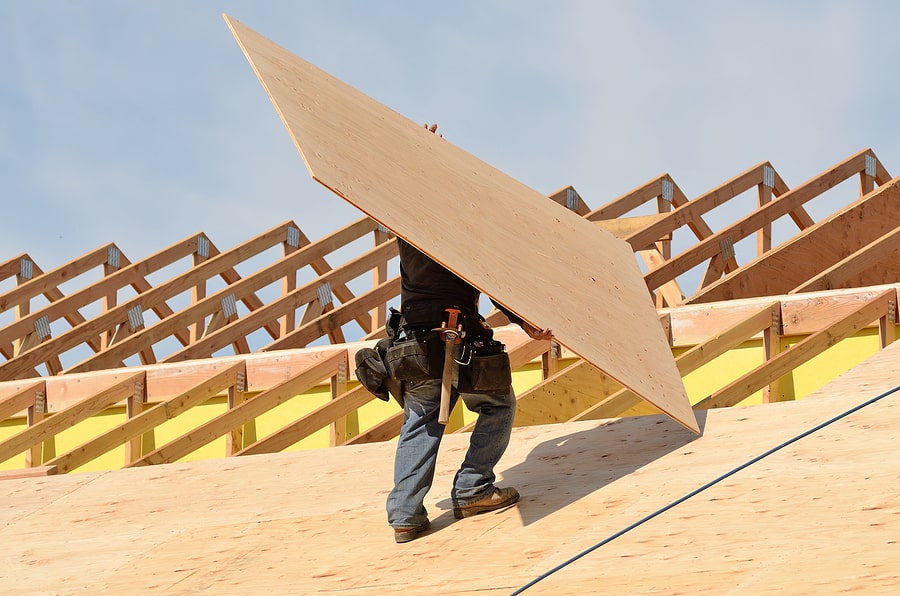
Most homeowners only believe they have roof damage if water spots form on their ceiling or shingles begin to wear. However, there’s a hidden layer of materials that may be rotting without you knowing it. In this guide, our experienced contractors reveal everything you need to know about roof decking damage.
Discover why the deck is so important to your home’s structural integrity and what you can do to fix deteriorating materials.
Roof Decks Reinforce the Materials You Place Overhead

Whether your home features asphalt shingles, durable metal panels, or heavy clay tiles, there’s one thing these materials have in common: They all sit on top of plank or sheet decking. Installers attach any of the following materials to your structure before laying down your chosen outer cover:
- Plywood
- Oriented strand board
- Steel
- Concrete
Every property needs a durable deck to support materials like shingles and tiles. Just because this layer is out of sight doesn’t mean it should be out of mind. The structure can rot over time and impact the integrity of your rooftop.
What Compromises a Roof Deck’s Quality?
Most professionals install new roofs with heavy plywood sheathing to reinforce the rest of the materials. Although high-quality wood will last for several years, it’s not entirely immune to damage.
Many homeowners experience roof decking damage because of moisture infiltration. An abundance of rainfall or snowmelt may cause water to seep beneath your shingles for the decking to absorb, exacerbating the rotting process.
Say you have a few missing shingles from your home. Pests can take advantage of the exposed spaces and burrow their way into the decking. If termites or other unwanted insects penetrate this surface, your structure becomes much less secure.
Recognize the Signs of Damaged Decking: What To Watch For
How can you tell if you’re due for a roof decking replacement? The signs of damage can be subtle, but as long as you know what to look for and act quickly, you can prevent costly structural issues.
Common signs of roof decking damage include:
- Water-stained walls or ceilings: Moisture infiltration from your exterior can leave your walls and ceilings with unsightly brown stains.
- Recurring leaks: Does your home experience frequent water damage due to a leaky roof? It’s a clear indicator of worn-out decking.
- Moldy attic rafters: Check your attic on occasion to monitor the quality of your decking. The presence of mold or mildew signals moisture seeping in from the outside.
- Sunlight appearing through your attic’s ceiling: Can you see a tiny bit of sunlight through a hole in your attic’s ceiling? Call experts immediately to address this issue.
- A sagging structure: Sagging indicates either excess moisture weighing down the structure or deck rot. Your outer materials need reinforcement so they don’t continue to weigh down a portion of the surface.
Don’t ignore these telltale signs of roof rot and water damage. Preserve your home’s structural integrity by contacting experienced contractors to evaluate the damage and replace the decking.
Unfortunately, it’s not possible to repair plywood sheathing with extensive rot, pest damage, or mold growth. Experts must replace the material for your safety and peace of mind.
Act Fast When Your Roof Needs Repairs – Contact Our Experts for Solutions
Unchecked roof decking damage spells trouble for any property owner. Thankfully, Nelson Roofing offers top-notch repair and replacement services. Let our licensed contractors transform your exterior and make your home safer with high-quality materials.
Contact us online or give us a call at (402) 464-2418 to schedule a free inspection today!
